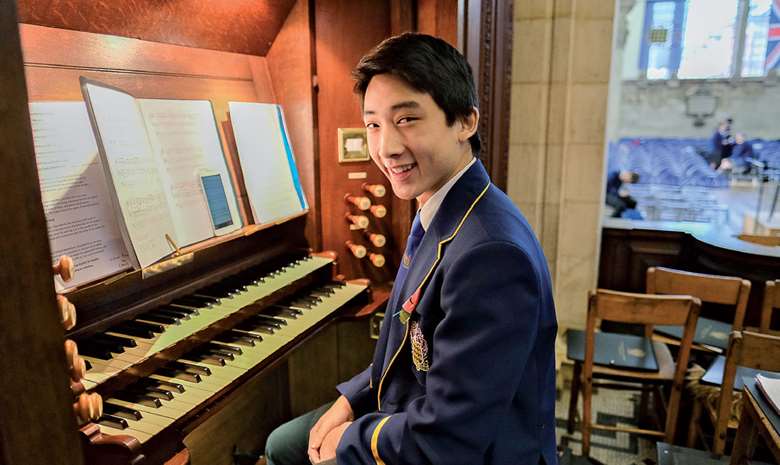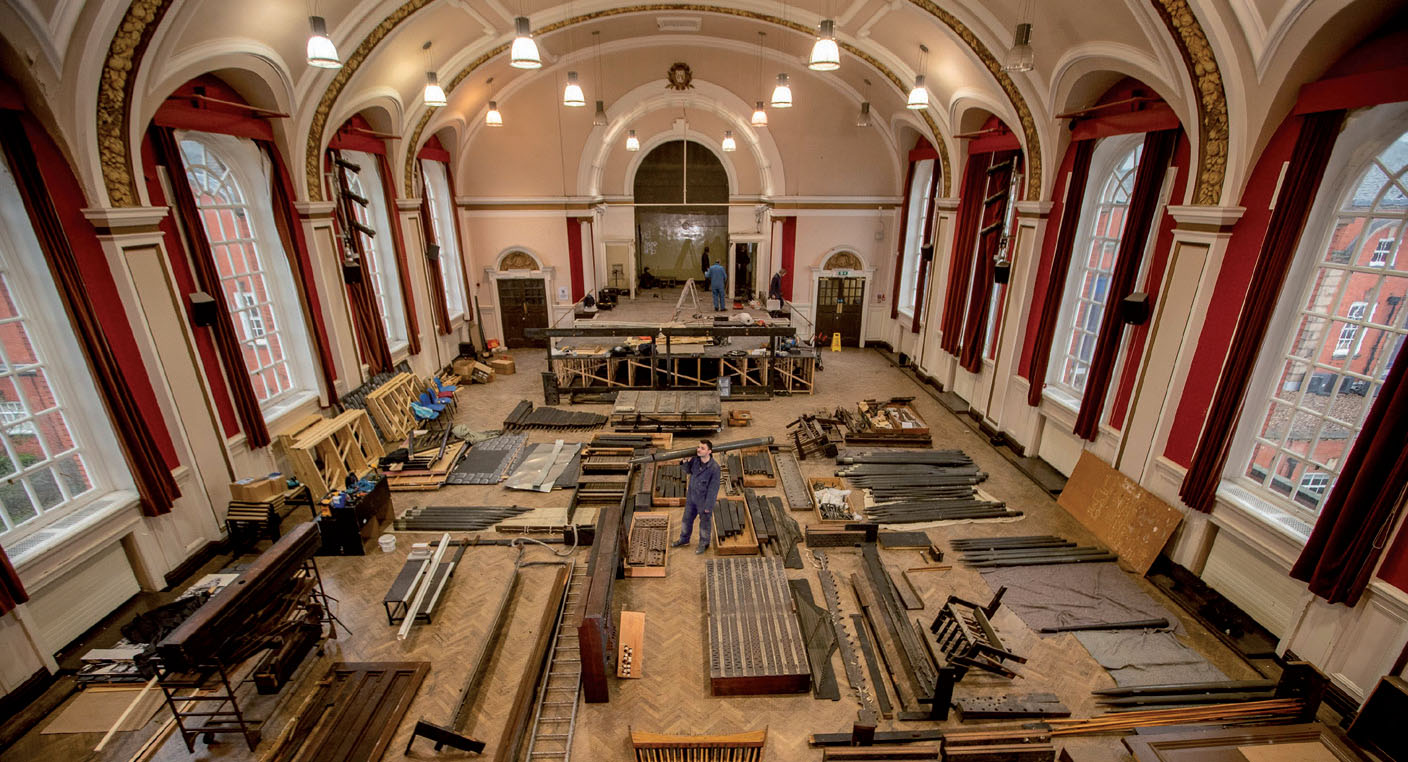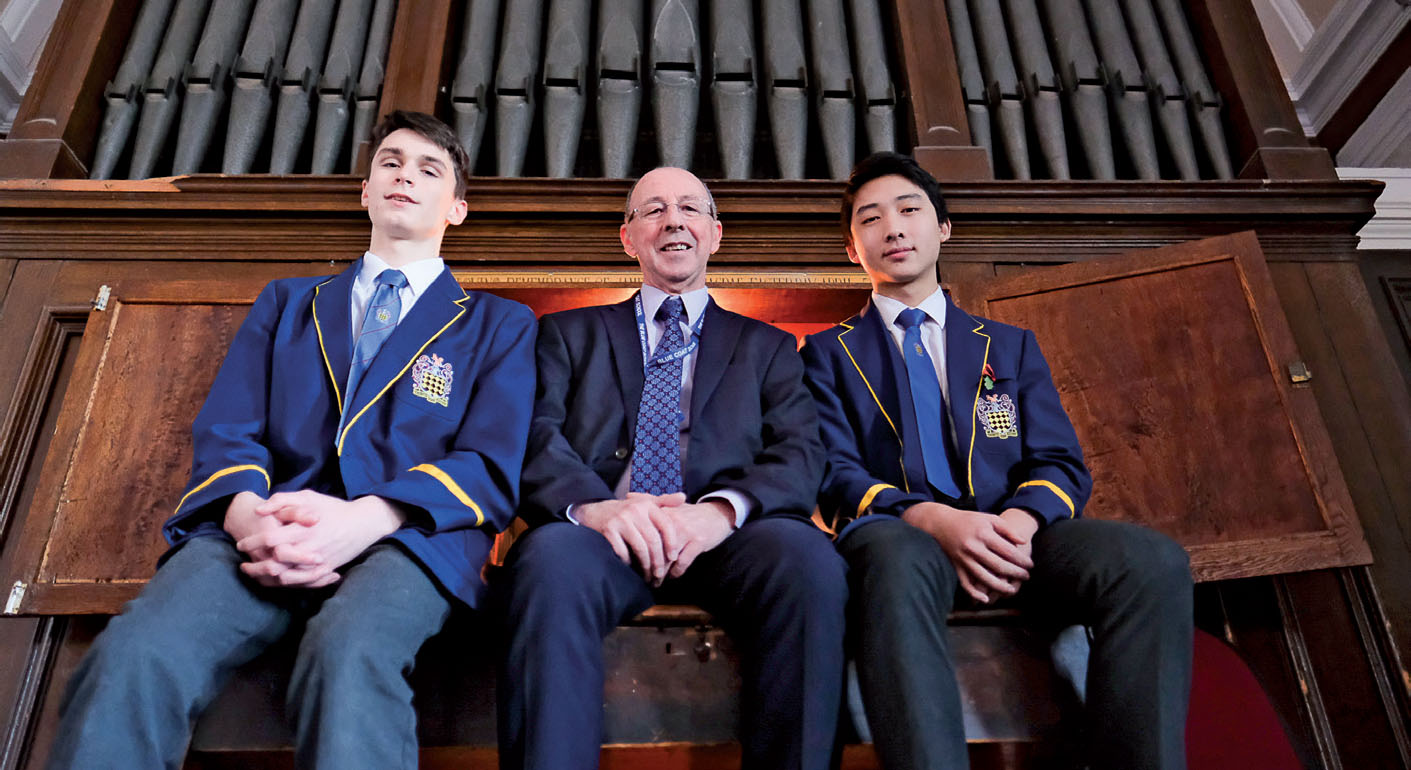Pipe dream?: Organ Scholarship proposal
Glyn Môn Hughes
Wednesday, May 1, 2019
Despite its rich heritage and beautiful intricacy, the organ has struggled to capture young people's attention. Glyn Môn Hughes knows of a school in Liverpool that might have found a solution

It was something of a surreal moment. I was walking down a corridor in Liverpool's historic Blue Coat School and the sounds of Duruflé's notoriously difficult ‘Toccata’ began echoing around. Turning into the former chapel, there was a 17-year-old organist ‘just sight-reading’ a piece which strikes terror into well-experienced organists.
But that afternoon demonstrated the paradox of this highly successful school in the Wavertree suburb of the city. It's a state grammar school where there are eight applications for every place. Unusually for a state school, it has a chapel. And, highly unusually, it has not one but two organs.
Now the school has set itself a tough task and is aiming to boost the number of organists – especially from among the ranks of female pupils – by launching a new organ scholarship which is said to be ‘unsurpassed outside London’. Holders of the scholarship will be offered tuition on the instruments at the school as well as at both of Liverpool's cathedrals. The Willis organ at Liverpool Anglican Cathedral is the largest instrument in the UK and will, doubtless, prove attractive to potential scholars. In addition, the new scholarship is being enthusiastically backed by Chris McElroy, director of music at Liverpool Metropolitan Cathedral and Lee Ward, his counterpart at the Anglican Cathedral, both of whom are ‘Old Blues’.
The school can trace its roots to 1708 when the Liverpool Blue Coat Hospital was located in a striking city centre building which is still very much in use has since become the Bluecoat Arts Centre. The school moved to its present location in 1906, bringing with it the Father Willis organ built in 1874, which mercifully meant that the instrument was saved from destruction in the savage Liverpool Blitz of 1941, when the interior of the original school was burnt out.
That rare museum-quality instrument was recently removed from the school for restoration at Henry Willis organ builders, which is now headquartered in Liverpool. It is due to be reinstalled in its original location in the autumn half-term. The organ restoration is part of the recently launched Blue Coat for All project, which has been awarded a £162,800 Heritage Lottery Fund grant. The grant is the second round of a total £180,600 bid, having already secured a £17,800 development grant along with a further £32,155 in match funding from charitable trusts and donations from friends of the school.
The Willis organ, located in Shirley Hall – named after a former trustee and benefactor – will become a prominent part of the Blue Coat for All project. The project will also include, for the first time, a series of public concerts, the formation of a 50-member Community Choir, digitally cataloguing the school archives and making them available on a new website, plus the development of a community outreach programme with local primary and specialist schools.
The organ is particularly significant in that it has had minimal alterations in its 144-year history. It retains its original mechanical key and stop actions, wind system and pipes. Once it is back in situ, a pilot organ scholarship scheme will be launched in the winter with pupils able to play the Willis organ and the 1906 Walker organ in the chapel.
‘The Blue Coat for All project is a really exciting and dynamic project for the school,’ says headteacher Mike Pennington. ‘We shall not only be able to restore the Father Willis organ but also use it as a springboard to expand into an entirely new public musical realm, by bringing in the community to enjoy concerts at the school.
‘Our organ scholarship proposal, combining the organ resources of our school with those of the two great Liverpool cathedrals, will create an unsurpassed national music training opportunity for young people.’
Tom Bell, the Royal College of Organists’ (RCO) northern director, talks of the Willis organ's ‘fantastically rich, fulsome sound’. ‘Working with Blue Coat School is a wonderful chance to help the RCO's goal of promoting organ music to the community and young people,’ he notes. The UK desperately needs more organ players and we especially want to attract young women to learn to play.’
The project also has the support of Peter Toyne, former vice-chancellor of Liverpool John Moores University, the co-chair of the Young Organ Scholars’ Trust and a Blue Coat Ambassador.
In addition to the use of the Willis organ in concerts, a new programme entitled Father Willis’ Wicked Workshops will use the instrument to lead interactive music, heritage, and science workshops for primary school pupils from disadvantaged areas of Liverpool and for specialist school pupils, such as the Royal School for the Blind Liverpool. One example of the workshops will use the organ's mechanics to teach the principles of stationary sound waves, led by a retired physics teacher.
Dan Greenway, he who sightreads Duruflé for fun, has just passed his Grade 8 organ examination with distinction and is now preparing to take his LTCL. ‘People who've never met organ music have listened to us playing and they have gone home and listened to more organ music,’ he says. ‘I think the new Blue Coat scholarship is great because it will be a way to enrich the musical lives of young people in a way not possible outside London.’

Joe Wakefield of Henry Willis & Co. stands in the middle of the restoration work
His co-pupil Simon Cheung, also 17, says that the scholarship ‘will inspire the children of Liverpool to learn to play a rare and valuable instrument.’
Cheung is involved at a local church in Stanley, another Liverpool suburb. The church community paid for him to attend an organ course at Liverpool Anglican Cathedral, which is partly where his love for the instrument developed. He is also in the school orchestra and choir. ‘Coming to this school and seeing that the organs were not being played was sad,’ he observed. ‘But now, having taken up organ playing, others will see the organs being used and that might influence them to take up playing.’

Greenway (left) and Cheung (right) with Blue Coat For All project manager Peter Elson at the 1874 Father Willis organ
Dan, similarly, was involved in a church, singing in Liverpool Anglican Cathedral choir for some years. ‘For me, it was hearing Ian Tracey, the cathedral organist titulaire, playing large French symphonic organ music which attracted me to begin playing. This summer I will be going on the Oundle School organ course, which means having a chance to study with top-notch organists. I might then think about potential organ scholarships at university.’
Both boys are studying music at A Level, though while Dan seems to be interested in a musical career, Simon is keen to study medicine. ‘But I will continue to play music and I will carry on playing for a church,’ he adds.
Fundraising continues apace, raising cash to support the organ scholarships themselves. The Pipe Up campaign invites the public to sponsor any one of the Willis organ's 1,224 pipes. A oneand-a-half inch pipe can be sponsored for £10 while 16 foot pipes cost £250.
The promise of a succession of new and competent young organists emerging from the school will fill the gap caused by a dearth of talented instrumentalists. For many people worried by the trend of deserted organ benches this, surely, is a welcome development.

